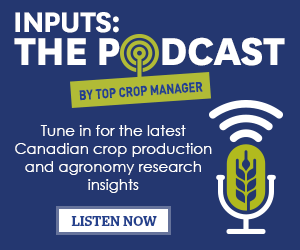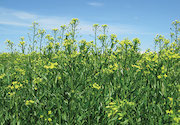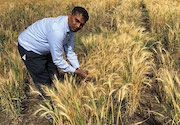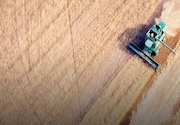| |
| |
 |
 |
| |
 |
|
@{mv_date_MMM d, yyyy}@ |
|
| |
 Ontario’s wheat harvest is nearing completion, so it’s time to consider what comes next for those fields. Harvested wheat fields offer the perfect opportunity to focus on improving soil health.
» Read more...
Ontario’s wheat harvest is nearing completion, so it’s time to consider what comes next for those fields. Harvested wheat fields offer the perfect opportunity to focus on improving soil health.
» Read more...
The Canadian Agricultural Safety Association and Corteva Agriscience will partner to provide rural fire departments that have completed CASA’s BeGrainSafe program with grain entrapment rescue equipment.
» Read more...
A recent survey of Ontario grain farmers shows that 76 per cent say they cannot compete with U.S. farmers receiving subsidies, which help them sell grain at low costs that Ontario farmers cannot afford.
» Read more...
|
| |
 |
 |
| |
|
| |

Field scouting should happen regularly through the season, and while digital platforms can’t replace boots on the ground, they can be helpful supplementary tools in the scouting toolbox. In this episode of Inputs, the podcast by Top Crop Manager, Lydia Parker, field product specialist with Climate FieldView, shares some of the ways a digital farming platform can help you through your growing season.
>> Listen Now |
| |
|
| |
 Also known by the name false flax, camelina has potential across a wide range of applications, and interest in the crop is growing. From farmed fish food, to aviation fuel, to cooking oil, AAFC Saskatoon Research and Development Centre scientists are working in collaboration with researchers across Canada, including a group in Atlantic Canada, to breed improved camelina for a variety of purposes.
» Learn more
Also known by the name false flax, camelina has potential across a wide range of applications, and interest in the crop is growing. From farmed fish food, to aviation fuel, to cooking oil, AAFC Saskatoon Research and Development Centre scientists are working in collaboration with researchers across Canada, including a group in Atlantic Canada, to breed improved camelina for a variety of purposes.
» Learn more |
| |
 Raja Ragupathy, a research scientist with AAFC Lethbridge, made preparing for a risky future a cornerstone of his winter cereal breeding programs. Winter cereals take advantage of the moisture available in late fall and early spring, but harsh Prairie winters make hardier winter wheat varieties necessary. Ragupathy’s research looks to breed winter wheats that can survive the winter and thrive with less water.
» Learn more
Raja Ragupathy, a research scientist with AAFC Lethbridge, made preparing for a risky future a cornerstone of his winter cereal breeding programs. Winter cereals take advantage of the moisture available in late fall and early spring, but harsh Prairie winters make hardier winter wheat varieties necessary. Ragupathy’s research looks to breed winter wheats that can survive the winter and thrive with less water.
» Learn more |
| |
|
| |
 Cover crops are a hot topic these days, and for good reason: the benefits can range from reduced soil erosion to weed suppression to improved soil organic matter. The tricky part can be figuring out where to start if cover crops are new to you.
» Learn More
Cover crops are a hot topic these days, and for good reason: the benefits can range from reduced soil erosion to weed suppression to improved soil organic matter. The tricky part can be figuring out where to start if cover crops are new to you.
» Learn More |
| |
|
| |

The heavy rains of early July left many fields flooded and delayed haying for some Prairie farmers.
» Read more
A new $3-million cost-shared CAP program will help agricultural processors mitigate the spread of COVID-19.
» Read more
Construction will begin immediately on the new high-throughput grain terminal.
» Read more
|
| |
| |










